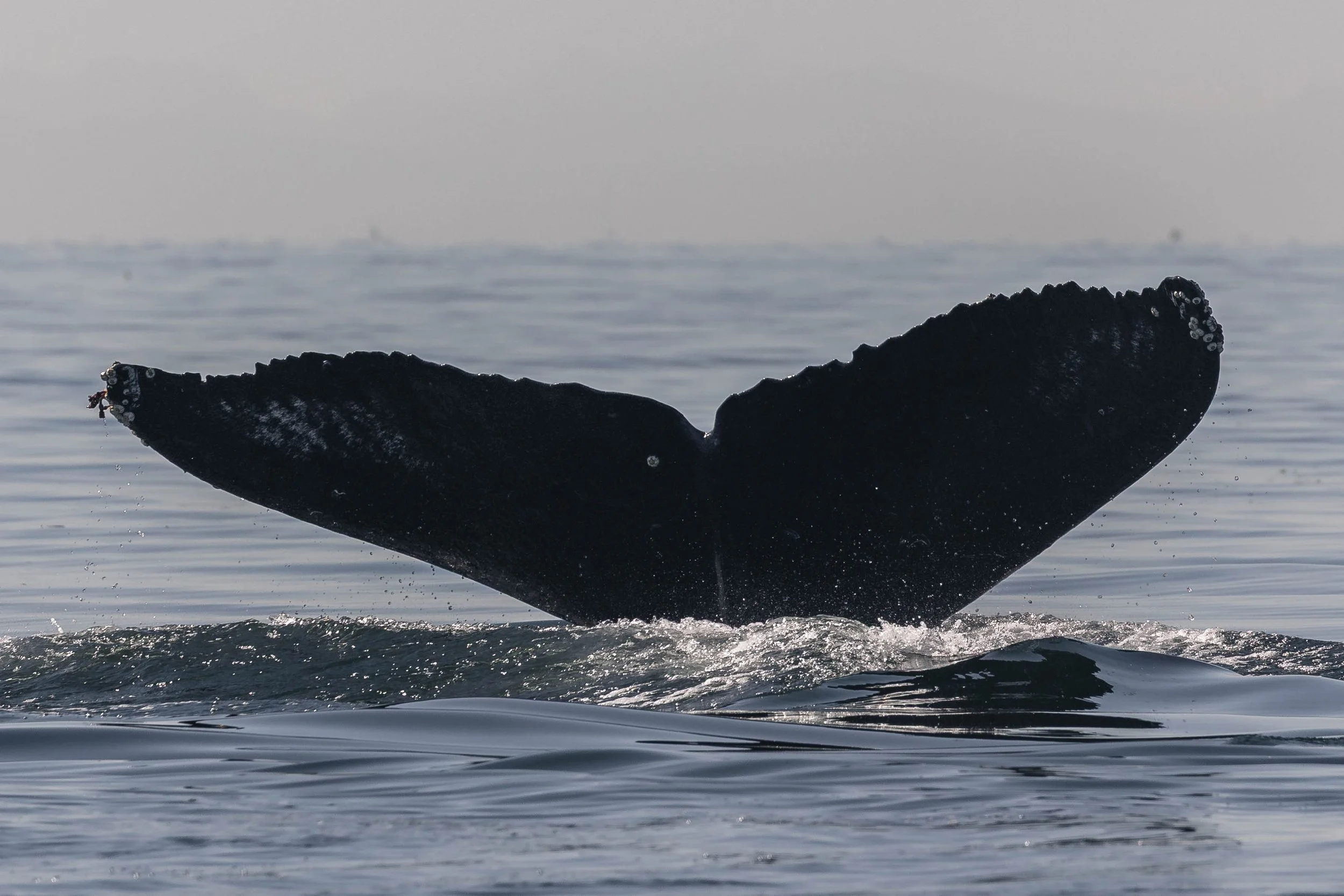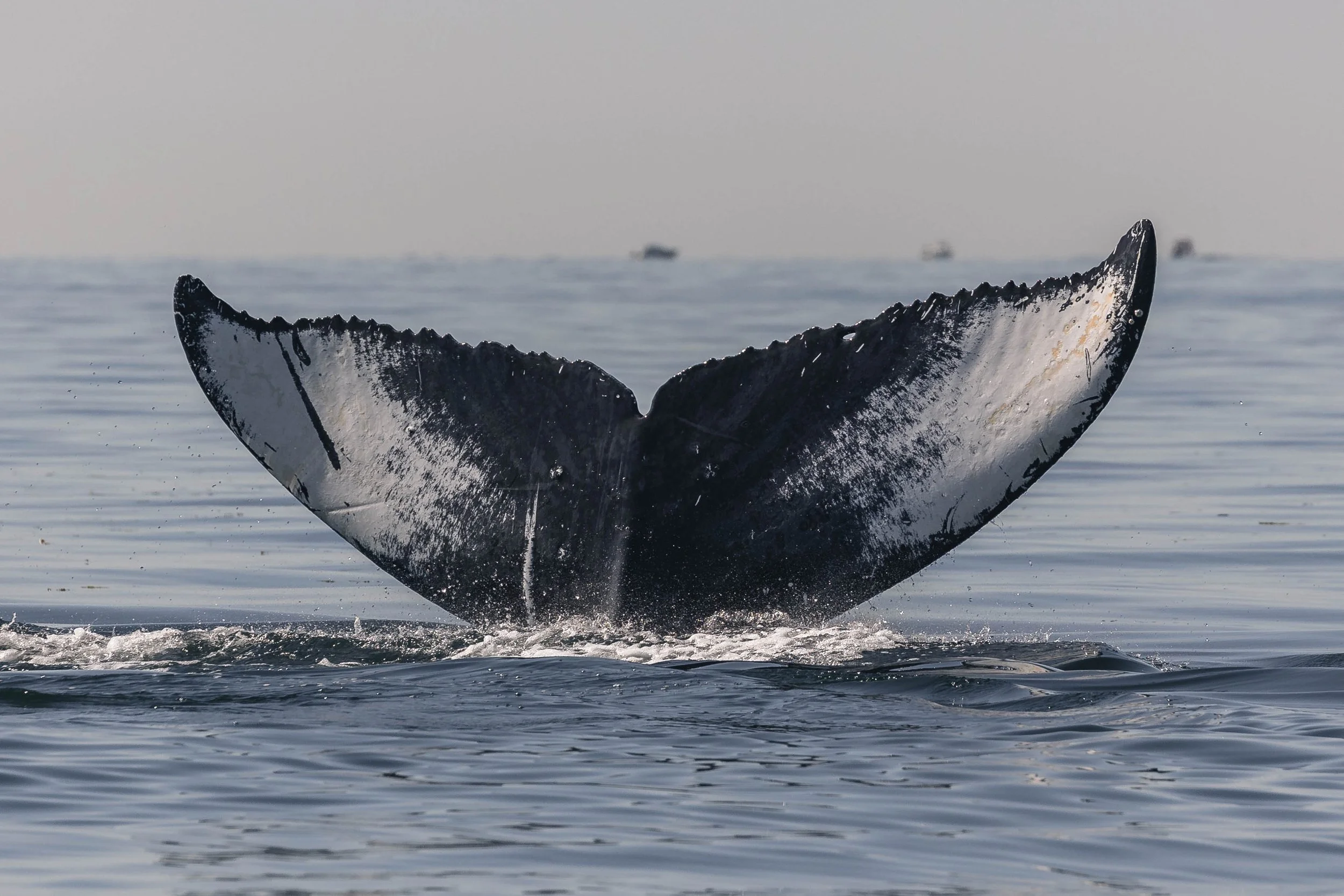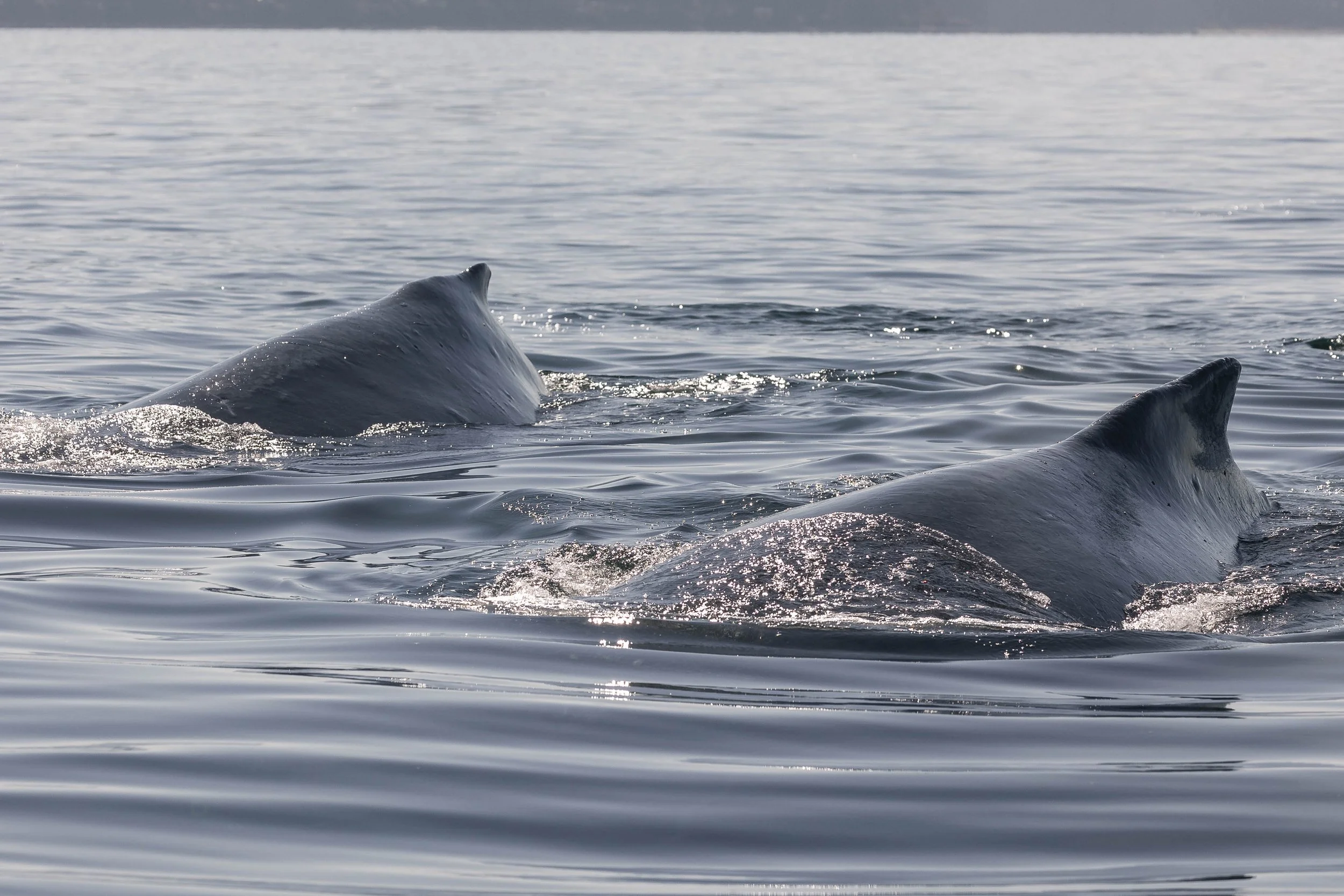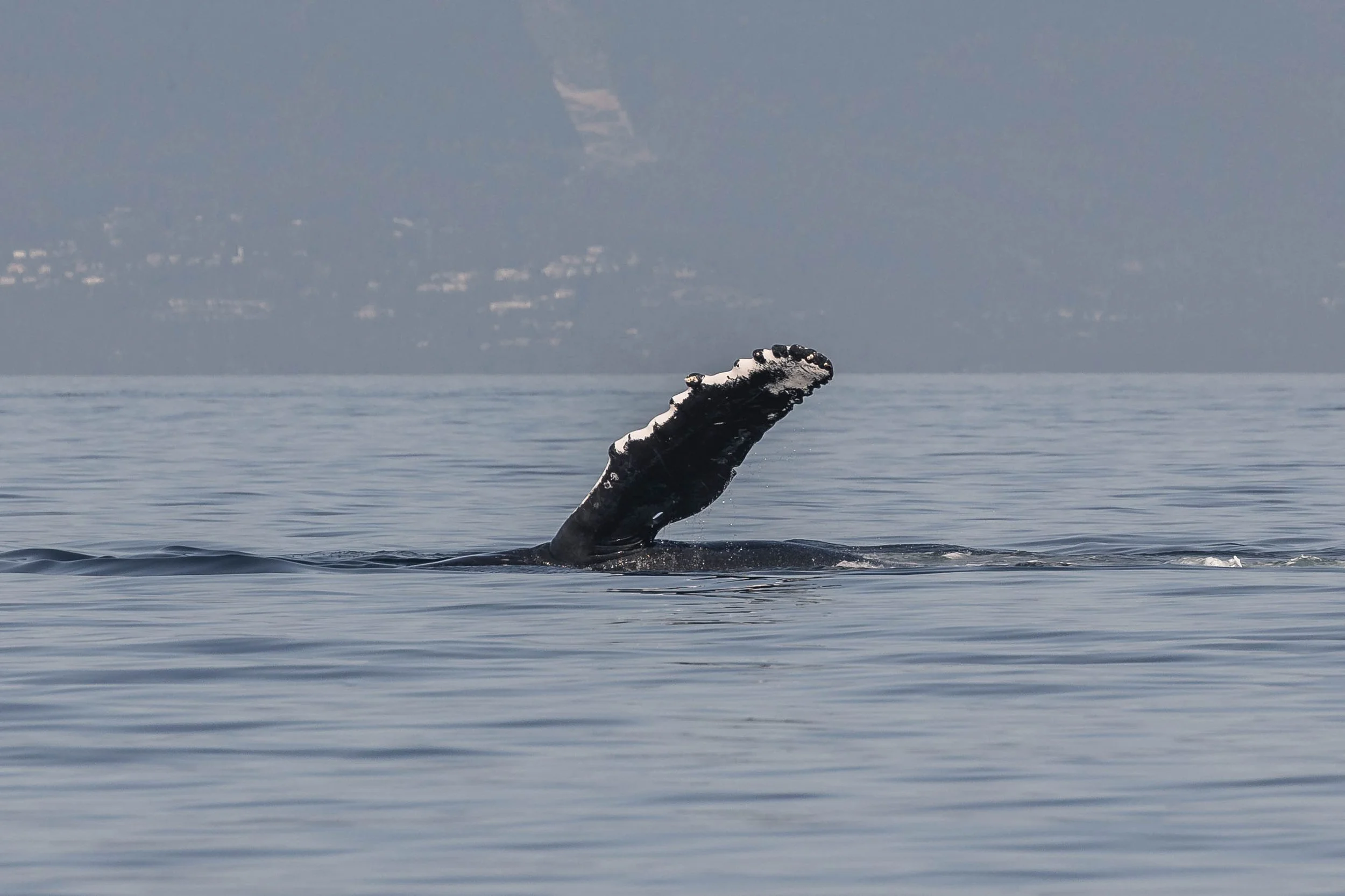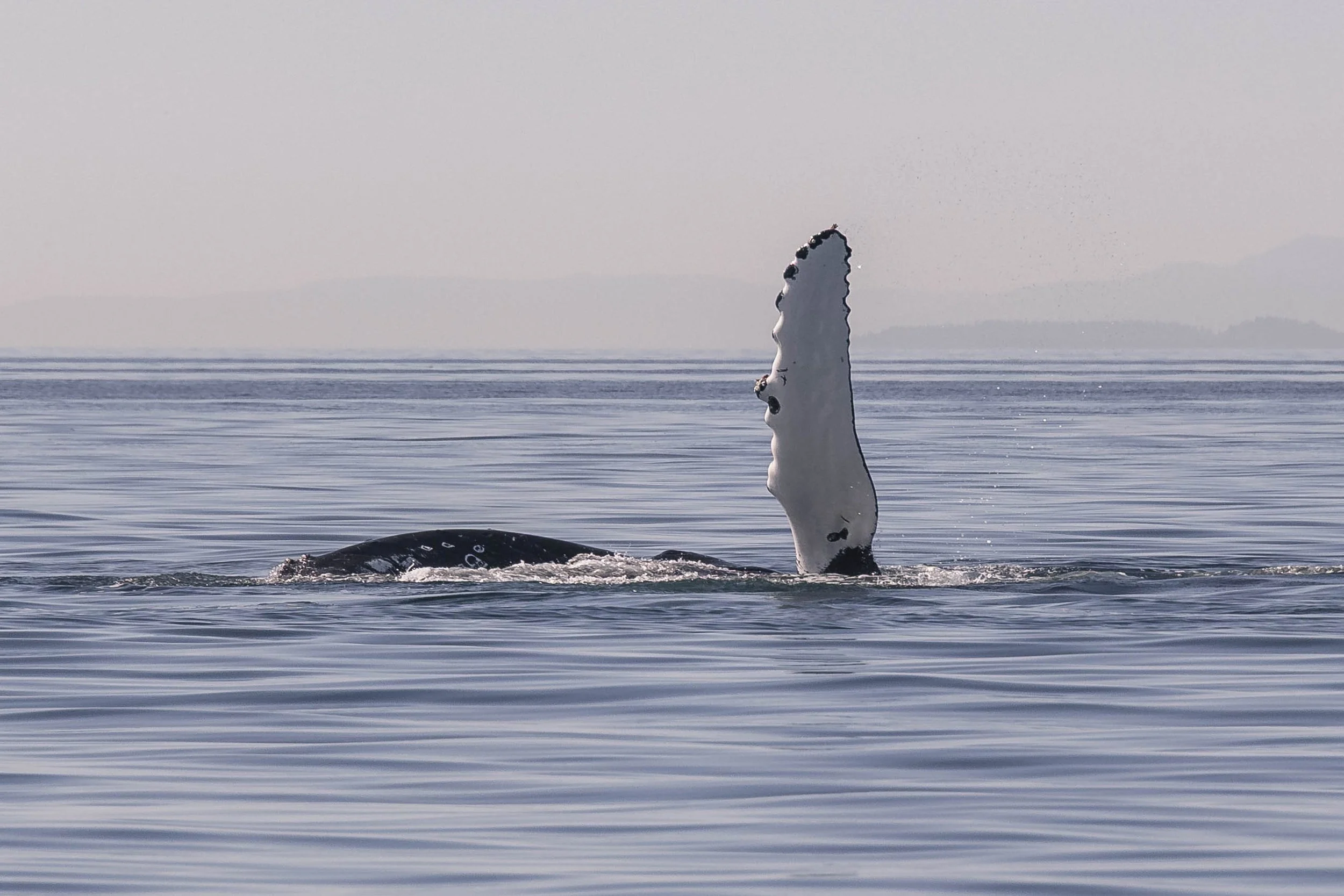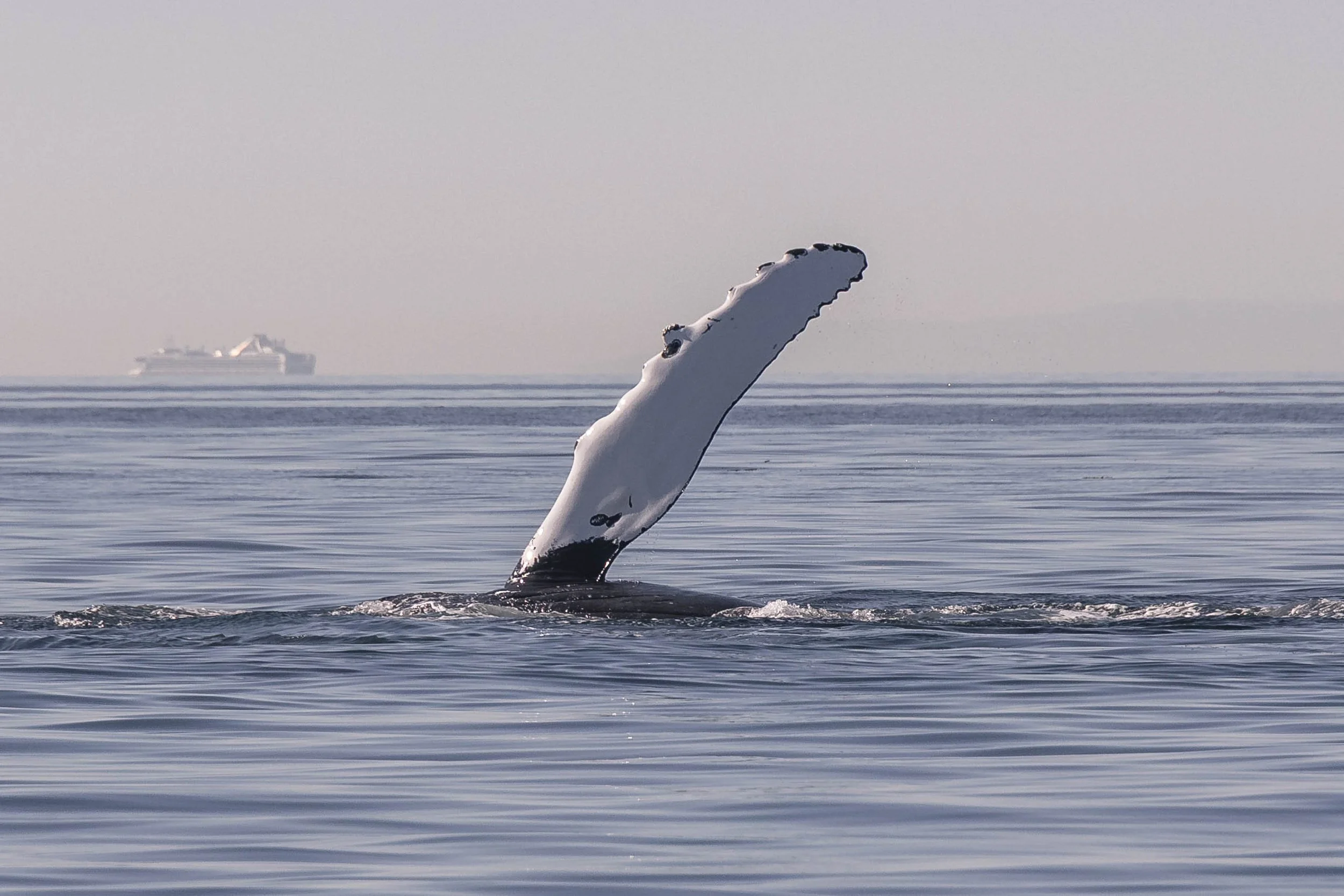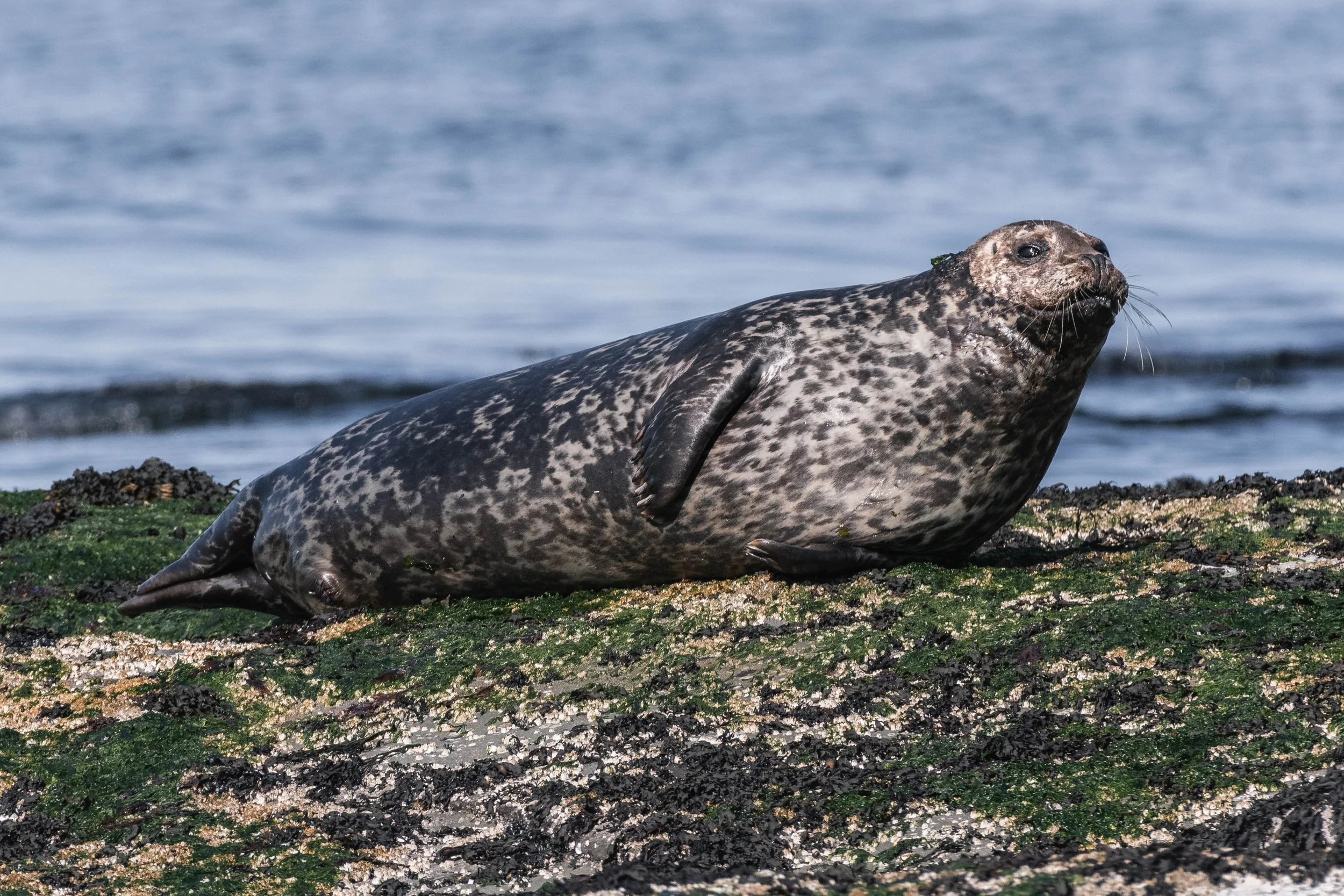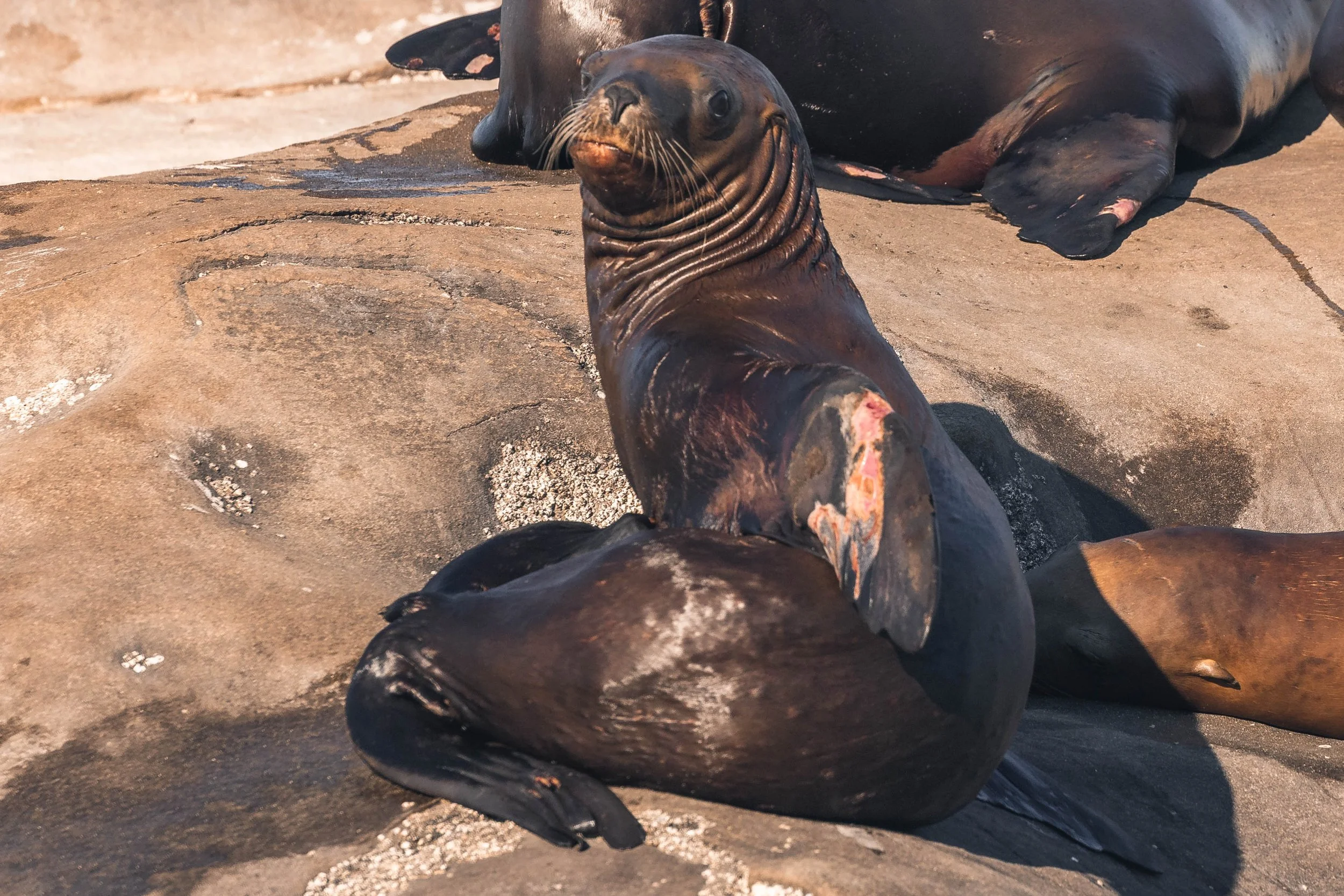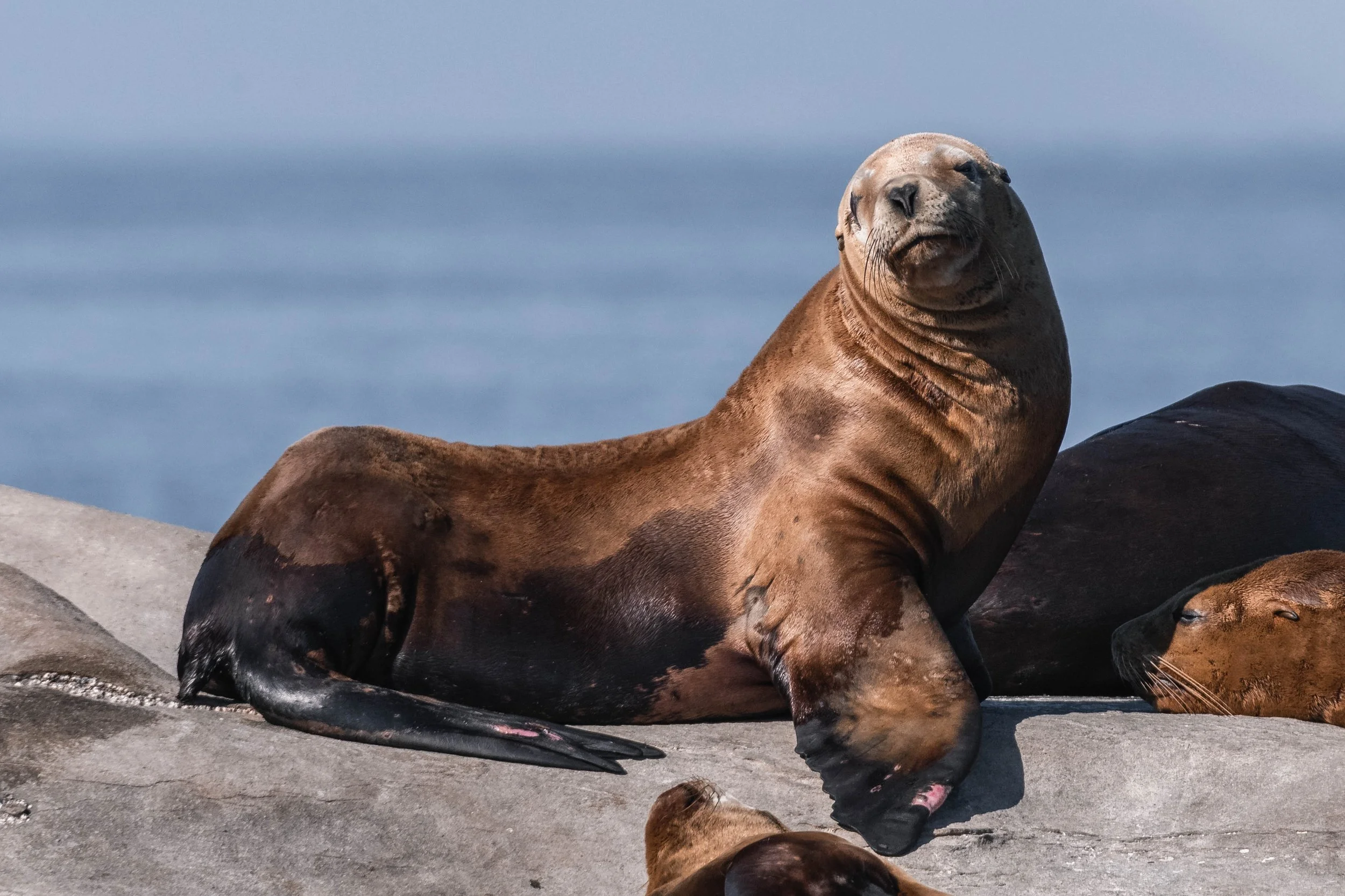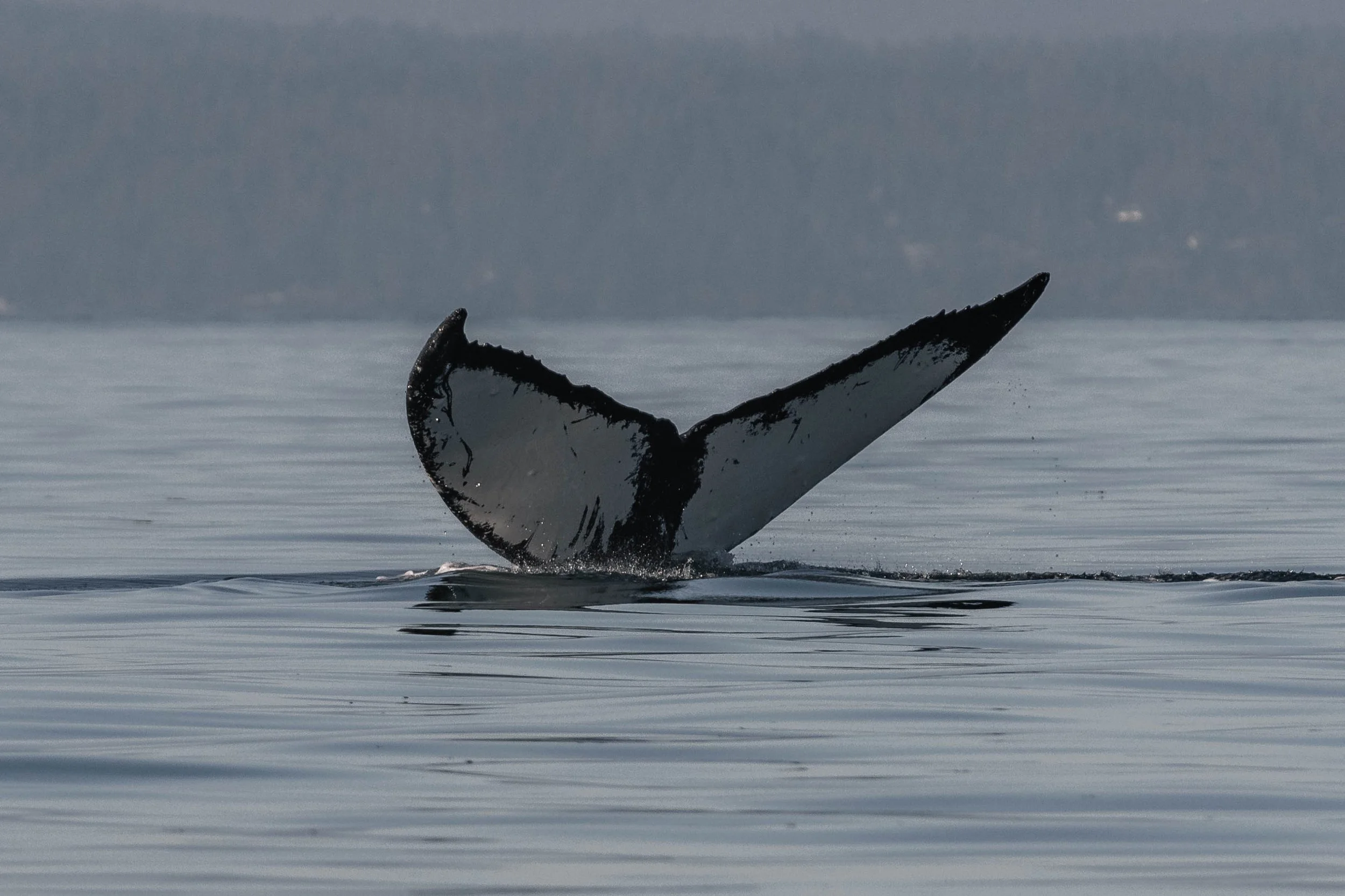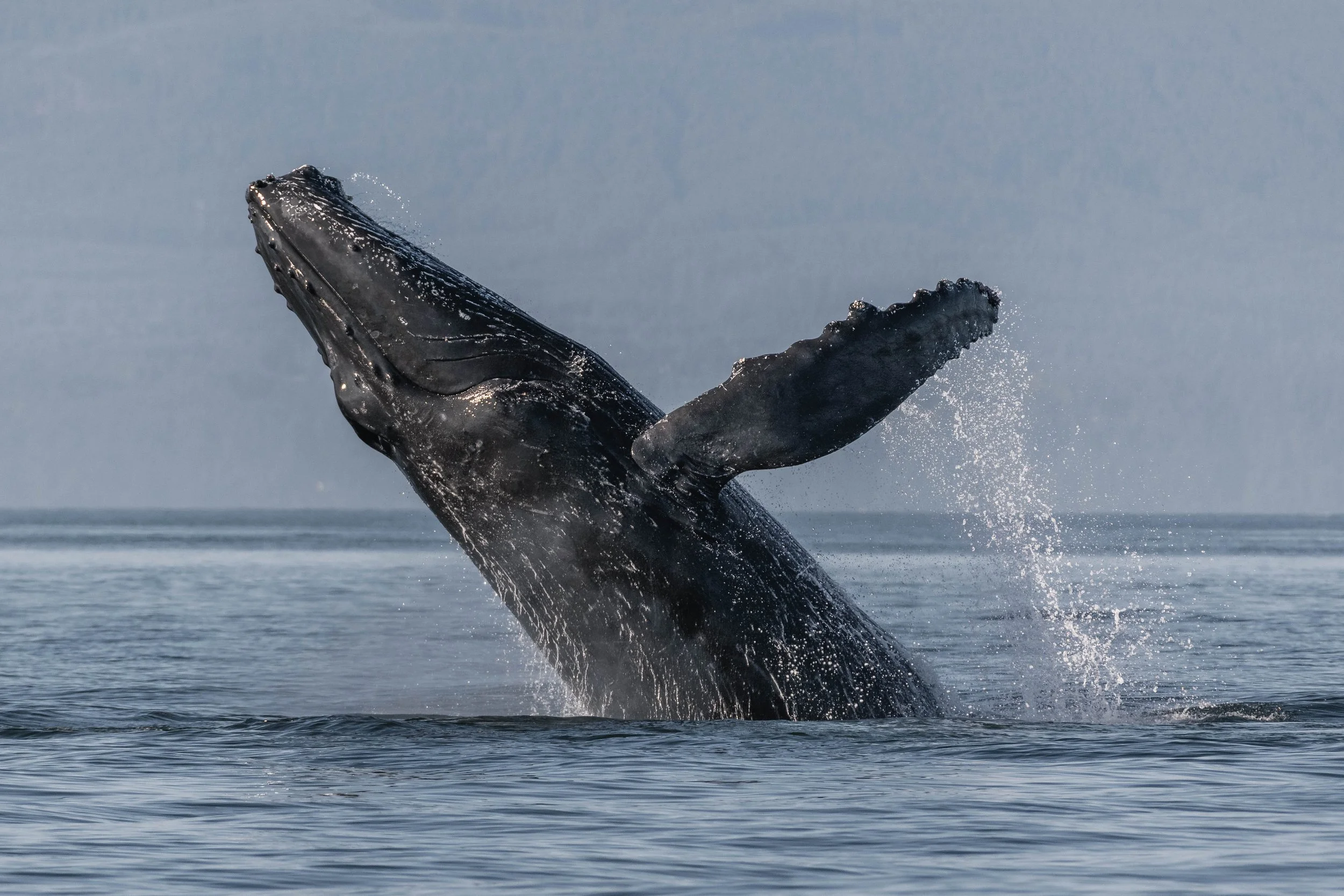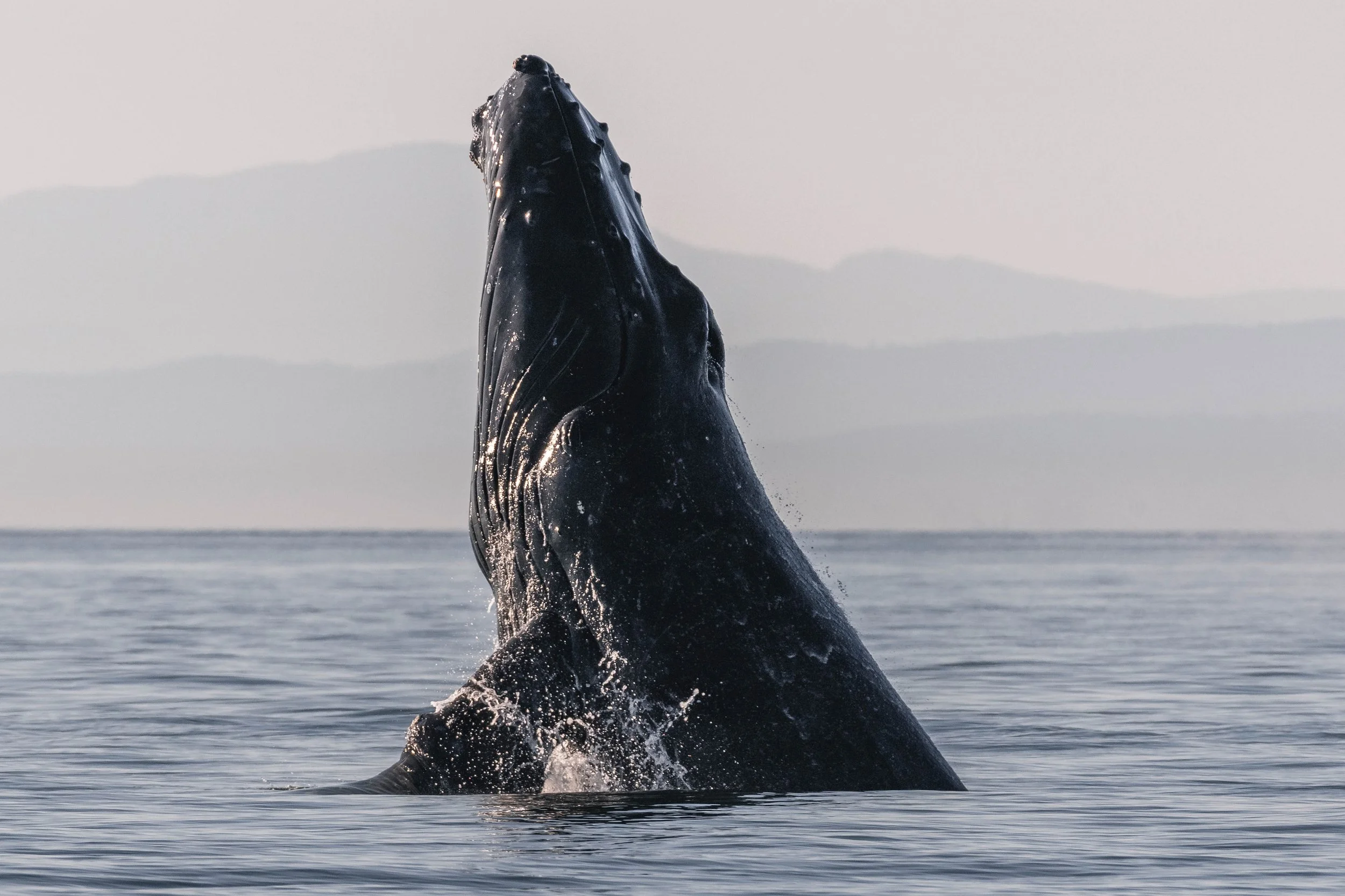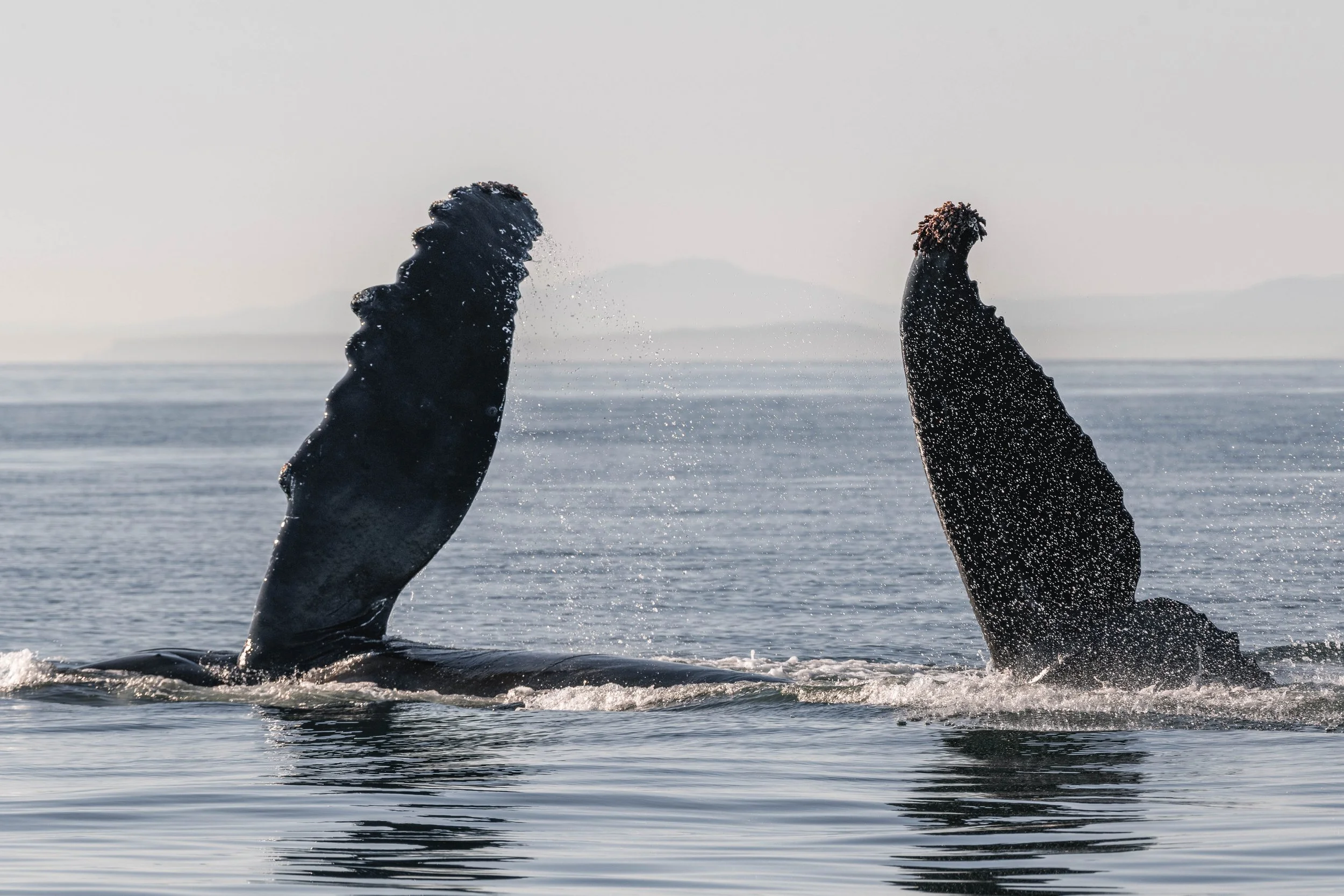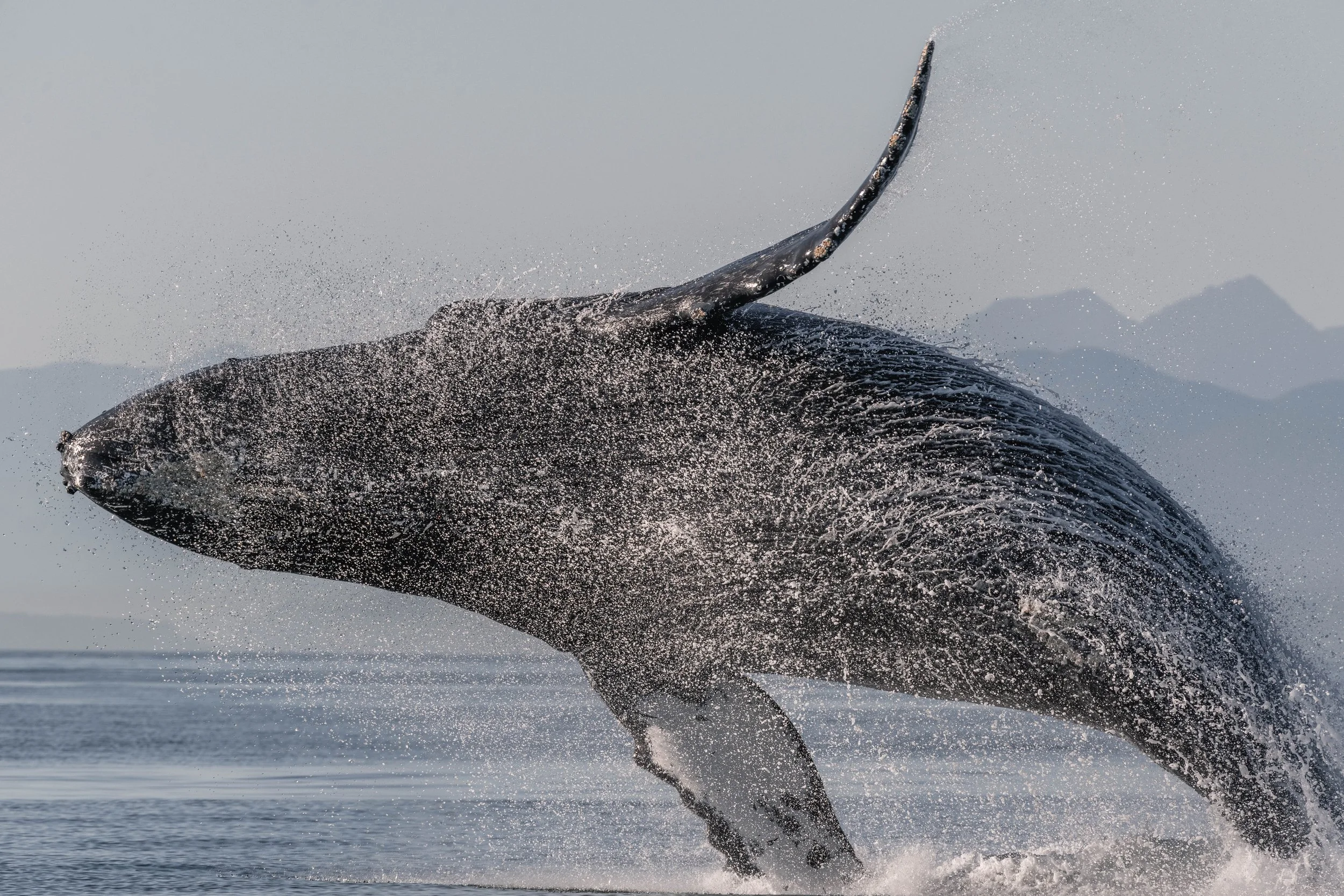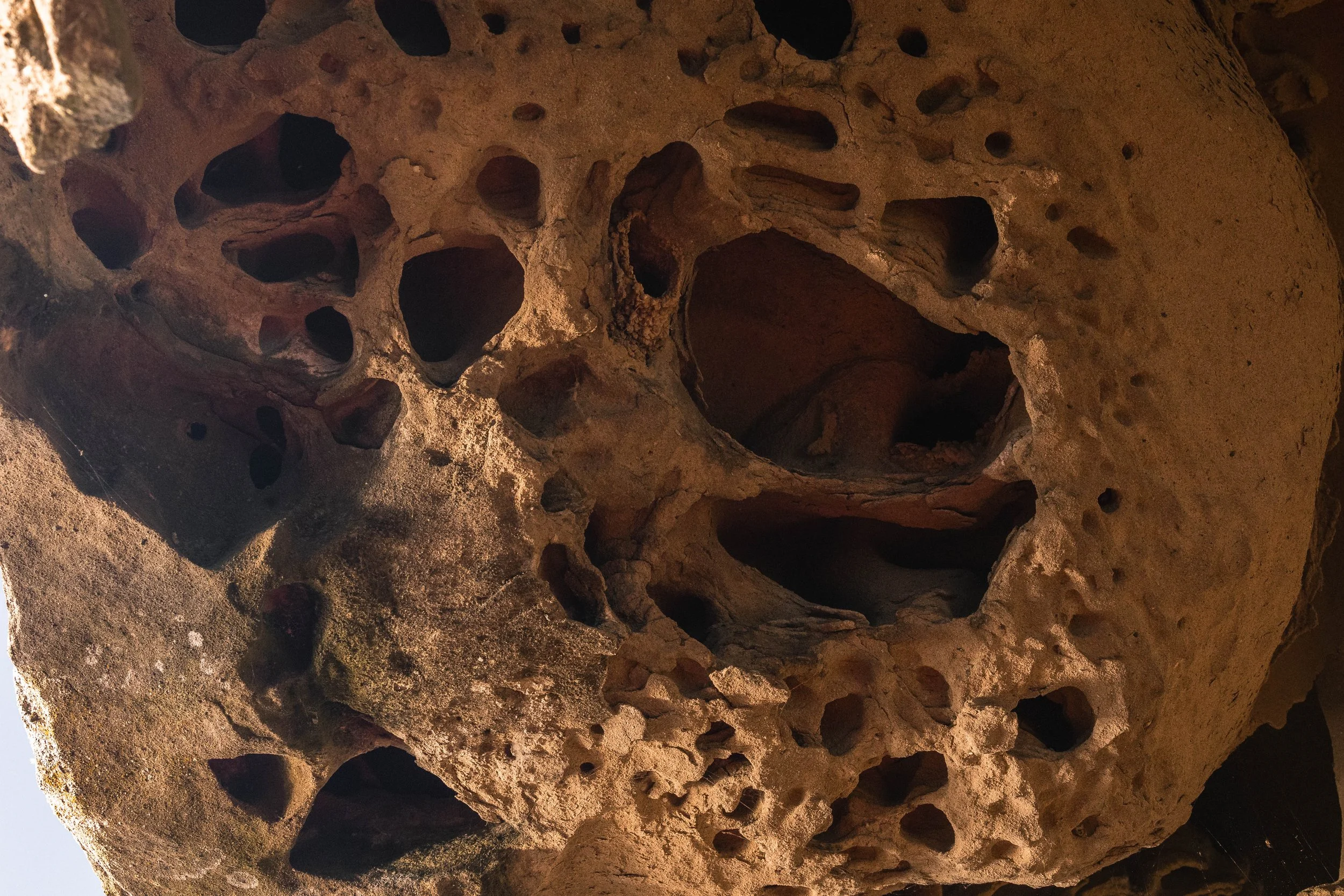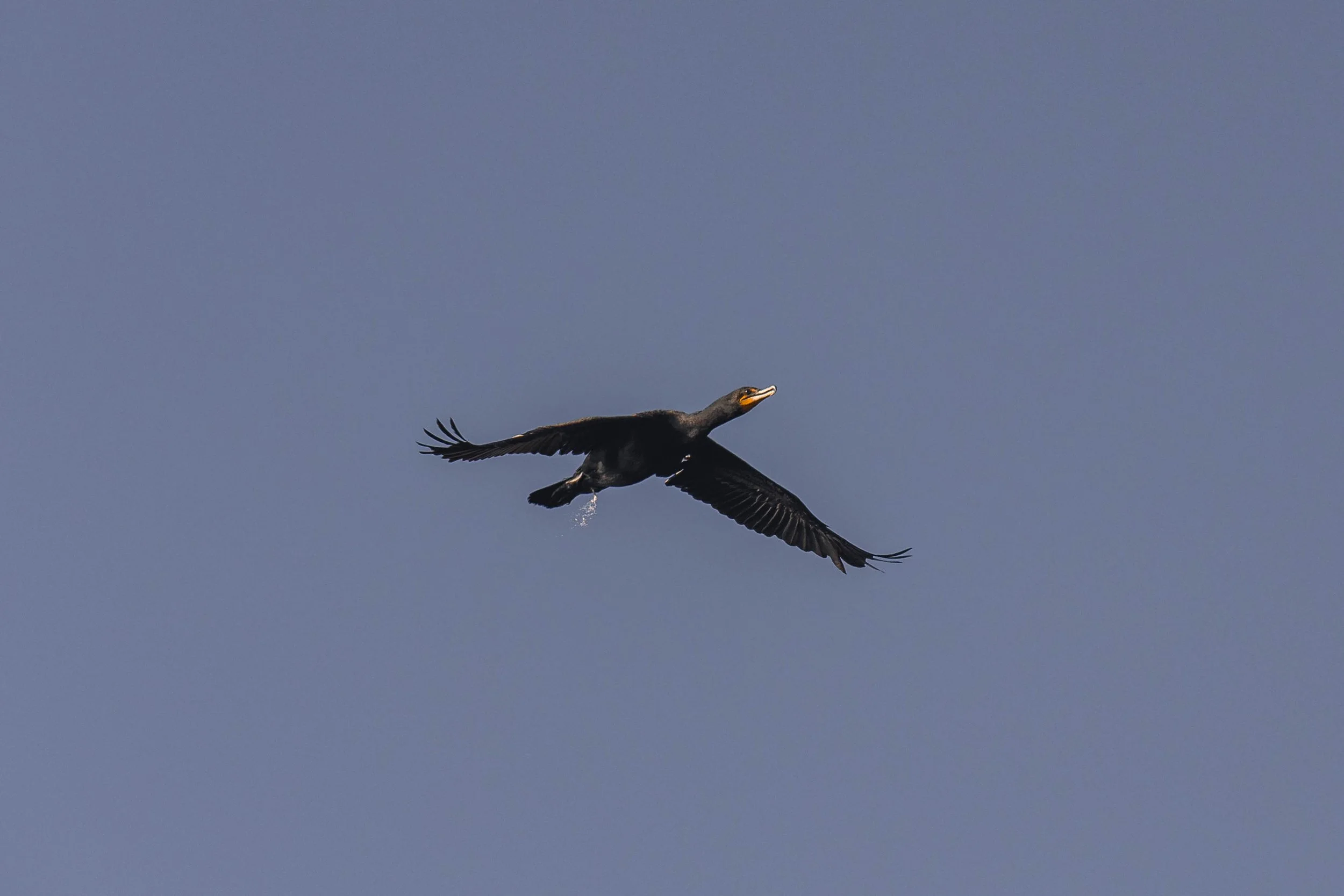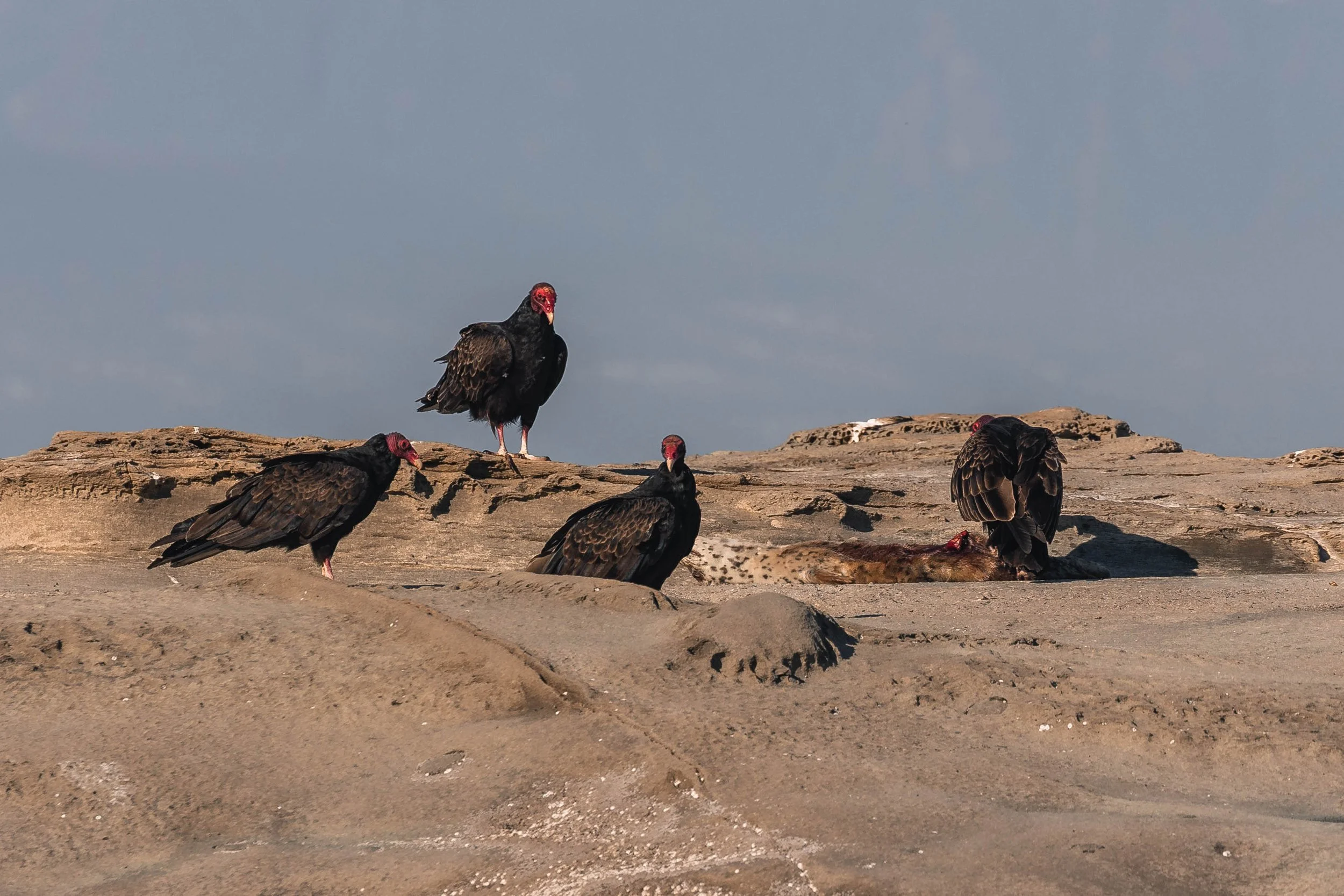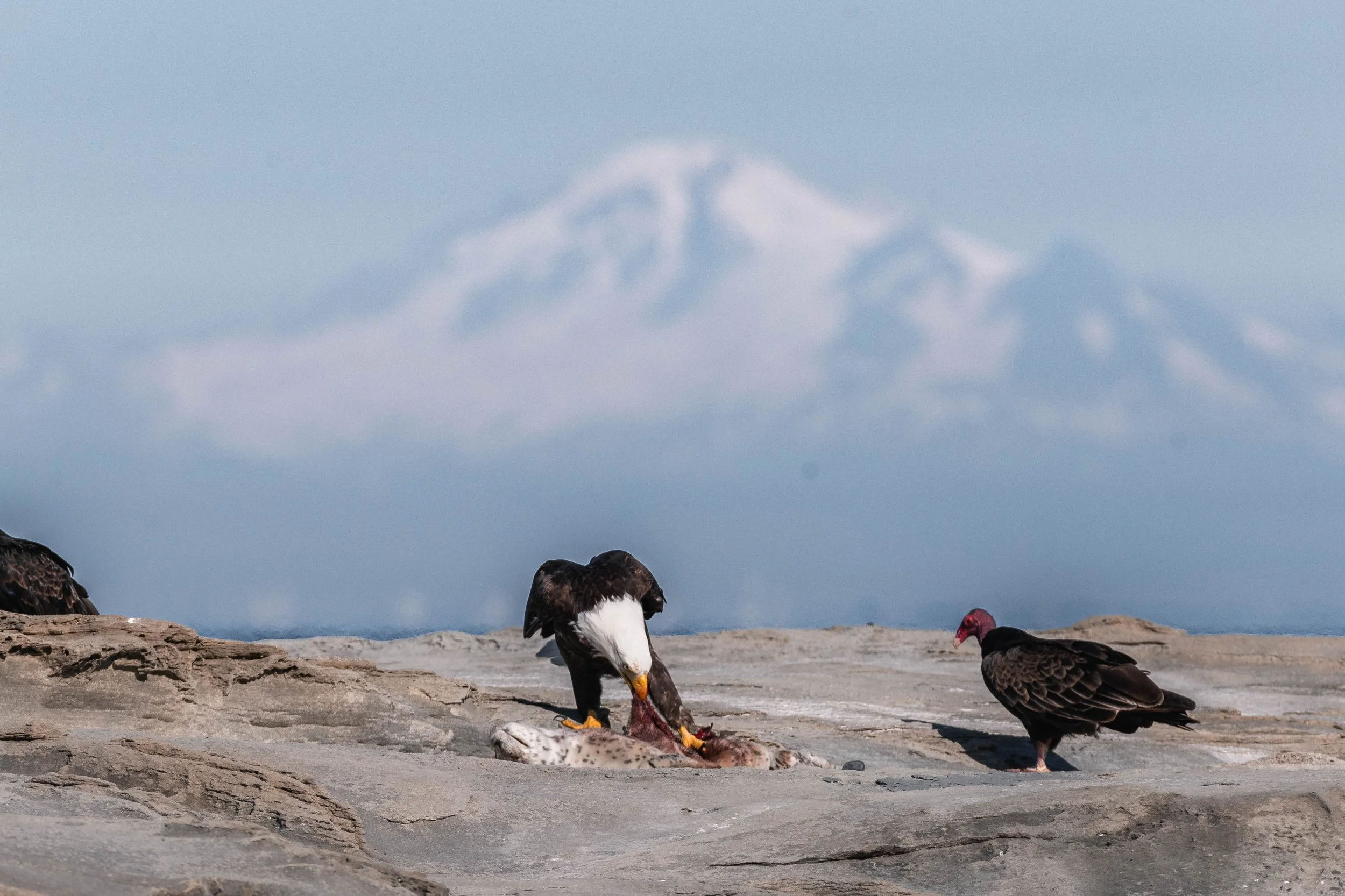July 29, 2025, 3:30 PM - The Soup continues!
All three of our boats pushed off the dock this afternoon in a race to search the Salish Sea. The Salish Sea is one of the richest and most diverse marine ecosystems in the world, teeming with life from its sunlit surface waters to the depths below. Nutrient-rich currents and tidal mixing create an ocean buffet that supports everything from vast schools of herring and salmon to towering kelp forests and colourful invertebrates. This abundance attracts an incredible variety of wildlife, creating a living tapestry where each species plays a role in keeping the ecosystem healthy and thriving.
It wasn’t long before our open boats were rewarded with one of the biggest species the Salish Sea hosts. They found themselves amid a group of Humpback Whales, which included the familiar flukes of Professor X (BCX1965), Hendrix (BCY1278), Hammer (BCY1222), Apollo (BCY0862), plus some friends! With whales surfacing in every direction, spouts and flukes appearing all around us, we affectionately call it “humpback soup”, and today’s serving was especially rich.
What’s remarkable is that just a decade ago, scenes like this were almost unheard of. For many years, scientists believed humpbacks were mostly solitary animals. The reason? We simply didn’t see them together very often. But the truth wasn’t about their personalities; it was about their numbers. Over the last century, commercial whaling devastated humpback populations worldwide, reducing the number of humpbacks globally by over 95%! Here in the Salish Sea, they even became locally extinct; for over 40 years, not a single humpback was seen in these waters. Thankfully, everything changed after the 1986 ban on commercial whaling. Thanks to their incredible resilience, humpbacks have staged one of the most inspiring comebacks in marine conservation. Today, over 500 humpbacks visit the Salish Sea each year, and British Columbia as a whole welcomes more than 4,000. Now, with more humpbacks in the water, we increasingly get to bear witness to gatherings like today’s, which provide proof that humpbacks are far more social and complex than we once thought. Each sighting is not only a joy to experience but also a valuable window into their evolving social lives.
With so many humpbacks now in our area, you may wonder how we keep track of them. All of the humpbacks are uniquely identifiable by looking at the underside of their tails. Each humpback’s tail (or fluke) is as unique as a fingerprint. The shape, pattern, and scars on the underside of the fluke are different for every whale. We catalogue each of the whales with ID numbers, nicknames and images of their tail. The ID numbers of the whales who visit this area start with three letters; the first two are BC for British Columbia, then they get given an X, Y or Z depending on how their tail looks. X = less than 20% of the tail is white, Y = between 20-80% of the tail is white and Z = more than 80% of the tail is white. Some flukes are more familiar to us than others, but when we come across whales we don’t instantly recognize, these categories give us a good starting point for our catalogue search.
Whilst the open boats enjoyed their soup, the semi-covered boat had found a Humpback Whale enjoying some alone time. This whale was quickly identified as Anvil (BCZ0410). Anvil is one of our Z whales, meaning she has a beautiful, primarily white tail. Whether in groups or travelling alone, we feel so lucky to get to spend time alongside these graceful ocean giants.
After some time with their respective whales, the boats began their search anew, excited at the prospect of what more the afternoon had in store.
The open boats stuck together and came across Velvet (BCY1186) and an unidentified friend, while the semi-covered boat stumbled upon Nike (BCX1337) and Bullet (BCX1658). It seemed like there may have been something in the water, as the whales were suddenly brimming with energy. Each of the boats was treated to a huge display of pec slapping, tail lobbing, and even breaching from their whales. A fully grown humpback can weigh up to 40 tonnes, so these types of behaviours exert a huge amount of energy and aren’t common for us to see! What a lucky day!
As if the whales weren’t enough to make the day memorable, our trip was rounded out by a bustling array of other wildlife encounters. Stinky Rock was teeming with life - and drama - today. The usual crowd of Harbour Seals lounged across the rocky outcrop, their sleek coats glistening in the sun, while the massive, boisterous Steller Sea Lions added their deep, throaty roars to the soundtrack of the day. Overhead, Bald Eagles circled with commanding grace, joined by nature’s clean-up crew, the Turkey Vultures. Today, the birds’ attention was drawn to a sombre scene: a deceased harbour seal pup. While it can be sad to witness, it’s also a powerful reminder of the circle of life. The pup’s passing meant life for others, providing a rich meal for the eagles and vultures, and in turn helping to sustain the very ecosystem it was part of. In nature, nothing goes to waste.
Our final stop took us to the striking Gabriola Bluffs. These bluffs are a haven for birdlife, from the sleek, black-feathered Cormorants drying their wings in the breeze to the quick, darting flashes of Kingfishers patrolling the shoreline. It was the perfect, lively ending to a day already overflowing with extraordinary moments.
Please enjoy the photos of the tour below, taken by Marine Naturalists Des Poier, Jordan Robinson and Aly Kohlman.
Did you know we can ID whales based on their flukes? This one belongs to Hendrix! Photo by Des Poier.
Water streaming off a fluke. Photo by Des Poier.
It’s Hammer time! Photo by Des Poier.
The bumps on the tips of the flukes are living animals called barnacles! Photo by Des Poier.
Hammer has a very bumpy spine. Photo by Des Poier.
Besties! Photo by Des Poier.
Professor X is a fan favourite. Photo by Des Poier.
Apollo (right) became a grandma this year! Photo by Des Poier.
Velvet tail lobbing. Photo by Des Poier.
Throw your hands up in the air! Photo by Des Poier.
Pectoral fins can be 1/3rd of the length of a humpback’s body! Photo by Des Poier.
Did you know each pectoal fin is unique? This one belongs to Velvet. Photo by Des Poier.
A picturesque fluke. Photo by Jordan Robinson.
Did you know that humpback pectoral fins are longer than those of the largest animal on the planet the blue whale? Photo by Jordan Robinson.
A nice wave. Photo by Jordan Robinson.
BC ferry with Mount Baker in the background. Photo by Jordan Robinson.
A jellyfish floating at the surface. Photo by Jordan Robinson.
A harbour seal checking out the boat. Photo by Des Poier.
A smug looking Harbour seal. Photo by Aly Kohlman.
A Steller Sea lion looking a little sad with a superficial pectoral fin injury. Photo by Des Poier.
Steller Sea Lion relaxing on another sea lion. Photo by Aly Kohlman.
Steller Sea Lion enjoying the sun. Photo by Aly Kohlman.
Bald eagle mid-flight. Photo by Aly Kohlman.
Anvil’s beautiful fluke. Photo by Aly Kohlman.
Anvil going for a dive with Mount Baker in the background. Photo by Aly Kohlman.
Nike showing off for Bullet. Photo by Aly Kohlman.
Nike chin slapping. Photo by Aly Kohlman.
Chin slaps are a fantastic way to communicate with other whales. Photo by Aly Kohlman.
Breach for the sky! Photo by Aly Kohlman.
Nike showing off his flexibility. Photo by Aly Kohlman.
When whales tail lob we can tell if they are male or female. With no hemispherical lobe present, we know Nike is male! Photo by Aly Kohlman.
You can almost feel the sheer power it takes to launch to much weight in the air! Photo by Aly Kohlman.
Beautiful breach by Nike. Photo by Aly Kohlman.
See the lines running down Nike’s throat? That’s his rorqual! Photo by Aly Kohlman.
Breach for the sky. Photo by Aly Kohlman.
Some beautiful formations at the Gabriola Bluffs. Photo by Des Poier.
Cormorants sitting in their nests. Photo by Jordan Robinson.
A King fisher swooping down. Photo by Jordan Robinson.
A Cormorat defecating mid-air. Photo by Jordan Robinson.
Guests enjoying our boat Cascadia. Photo by Des Poier.
Guests enjoying their time on our open boat Keta. Photo by Jordan Robinson.
Gore Warning: The following images are of birds feasting on a deceased Harbour Seal pup.
Turkey vultures are natures clean up crew, we love those bald heads! Photo by Des Poier.
Two bald eagles making a meal out of a deceased harbour seal. Photo by Jordan Robinson.
A Bald eagle enjoying some dinner as a vulture watches on. Photo by Aly Kohlman.
While it’s unfortunate that this pup did not survive, his death allowed so many others to continue on in the constant battle between life and death. Photo by Aly Kohlman.
Bald eagle eating with Mount Baker in the background. Photo by Aly Kohlman.

